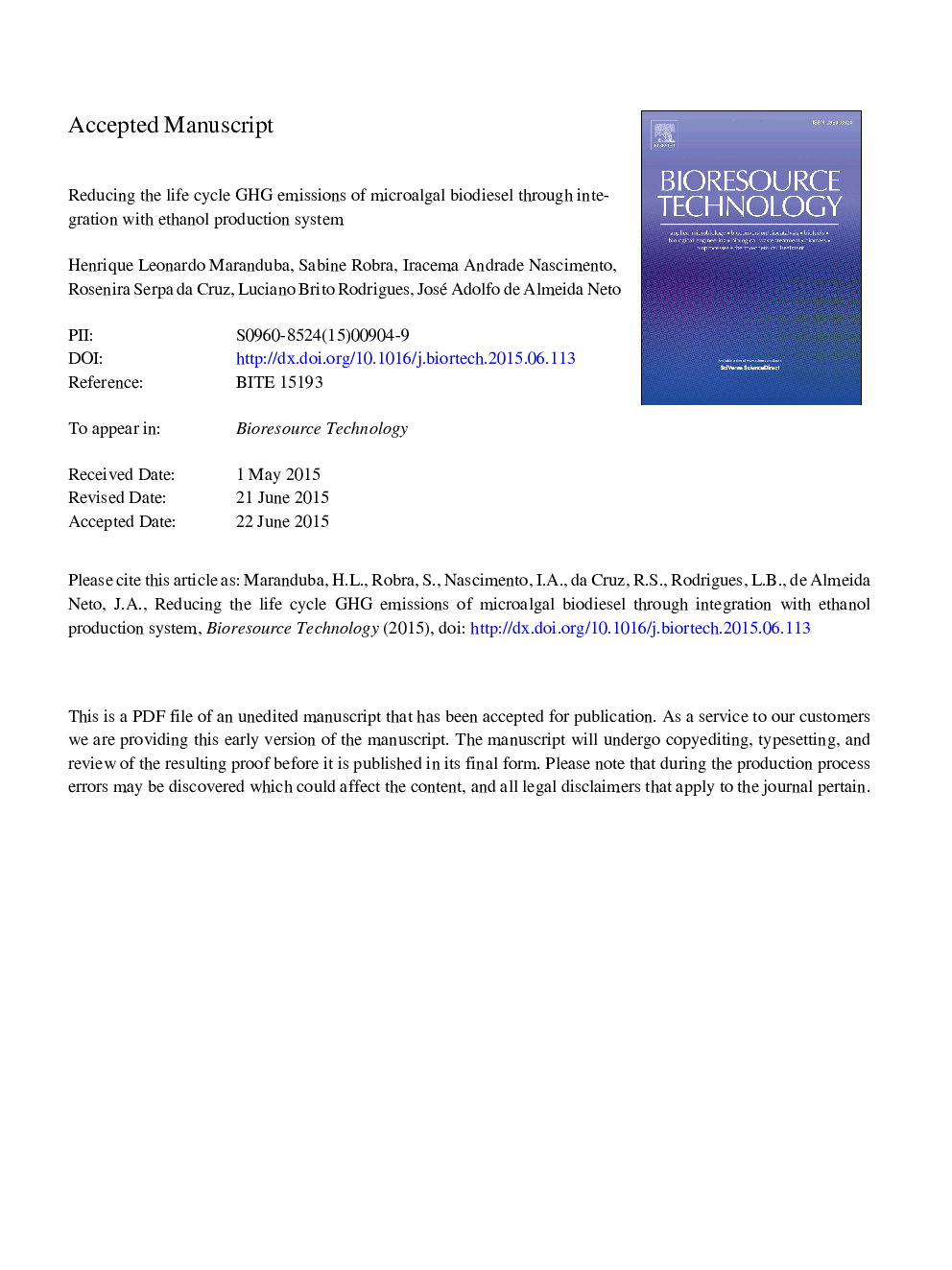| Article ID | Journal | Published Year | Pages | File Type |
|---|---|---|---|---|
| 7073781 | Bioresource Technology | 2015 | 23 Pages |
Abstract
Despite environmental benefits of algal-biofuels, the energy-intensive systems for producing microalgae-feedstock may result in high GHG emissions. Trying to overcome energy-costs, this research analyzed the biodiesel production system via dry-route, based on Chlorella vulgaris cultivated in raceways, by comparing the GHG-footprints of diverse microalgae-biodiesel scenarios. These involved: the single system of biomass production (C0); the application of pyrolysis on the residual microalgal biomass (cake) from the oil extraction process (C1); the same as C0, with anaerobic cake co-digested with cattle manure (C2); the same conditions as in C1 and C2, by integrating in both cases (respectively C3 and C4), the microalgae cultivation with an autonomous ethanol distillery. The reduction of GHG emissions in scenarios with no such integration (C1 and C2), compared to CO, was insignificant (0.53% and 4.67%, respectively), whereas in the scenarios with integration with ethanol production system, the improvements were 53.57% for C3 and 63.84% for C4.
Related Topics
Physical Sciences and Engineering
Chemical Engineering
Process Chemistry and Technology
Authors
Henrique Leonardo Maranduba, Sabine Robra, Iracema Andrade Nascimento, Rosenira Serpa da Cruz, Luciano Brito Rodrigues, José Adolfo de Almeida Neto,
